Slightly more than 100 years ago, on Feb. 17, 1919, station 9XM at the University of Wisconsin in Madison broadcast human speech to the public at large.
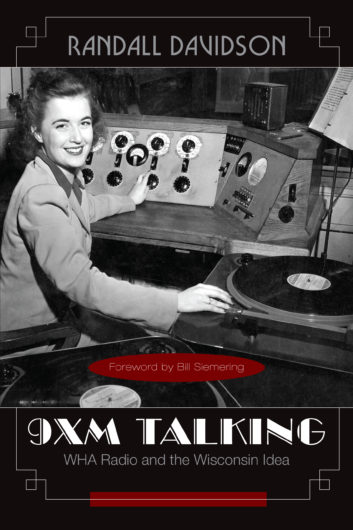
9XM was first experimentally licensed in 1914, began regular Morse Code transmissions in 1916, and its first music broadcast in 1917. Regularly scheduled broadcasts of voice and music began in January 1921. That station is still on the air today as WHA.
In 2019 we’re celebrating the 30th anniversary of Radio World International, but we mustn’t forget the whole story that began many years before.
TIME-LAPSE CAMERA
The first years of radio were undoubtedly flavored with a pioneering spirit, with new discoveries and technical advances. This led to more listeners and the beginning of modern broadcast radio.
About 60 years ago, radio was in nearly every home and radio engineers already had a thorough understanding radio frequency propagation and broadcast principles and tricks. So, having secured the transmission chain, attention could be shifted to indoor studio equipment.
If someone had installed a time-lapse camera in a radio studio 60 years ago, a review of all those images would display three main, well-defined periods. For the sake of simplicity, let’s consider the technical room, usually deployed at larger facilities, as part of the radio studio itself.
The first successful practical medium for music was the lacquer disc. After World War II the vinyl disc would be developed and refined into the “long-play/LP” and “45” to facilitate an explosion of music-based radio stations.
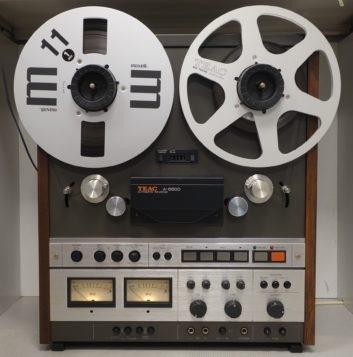
The industry practice would distill into a two-turntable arrangement to seamlessly transition from one song to the next one while the talent on air was speaking. Adding a third turntable with disc-cutting capabilities allowed for making recordings of programs.
“Automation” first became available also for smaller stations in the shape of large reel-to-reel tape recorders, which allowed the facilities to go on-air even when no one was in the studio.
The slow rotation of tape reels, as well as their size, resembled the rotation of records on turntables. That’s right, 60 years ago radio was based on rotation.
ROTATION
This first era lasted about 30 years, up to the late 1980s. Some 30 years ago, CD players started becoming popular in radio studios. Turntables stayed there for a few years, but they were eventually blown away by CDs, which offered more reliability, a compact size and were easier to use.
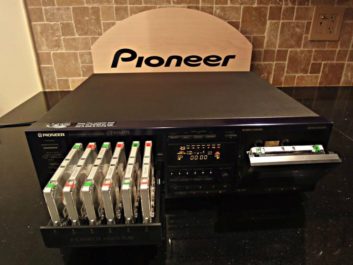
Reel-to-reel tape recorders suffered from the appearance of the first robotized cassette machines, which soon replaced them as backbone of “automation” systems.
By the end of the 1980s and beginning of 1990s the second period in modern radio began. The first issue of Radio World International appeared at that moment, when radio was still based on rotating devices, but the magic was becoming smaller and increasingly invisible since almost everything was bunkered behind the glowing front panel of CD players and cassette changers.
Soon after — and RWI was there to welcome that revolution — computers and digitized music reinvented both the practice and layout of radio studios.
VIRTUALIZATION
Suddenly, radio content no longer rotated. Everything became static and remote.
Radio studios still hosted the physical surfaces and PC monitors to control the whole system, but the system itself was usually installed into a separate room.
Software-based playout automation and music recommendation tools introduced a paradigm shift and dramatically changed the way radio professionals managed their stations. Digital audio formats completed the migration of radio studios to a static, software-centric model.
Just 10 years ago, a further revolution knocked at the industry’s door. Now we call this “virtualization,” but at the time the idea was just to have some software steps, each one capable of performing one of the routine tasks of a radio station’s everyday activity.
Telephone hybrids, microphone processors, mixing consoles, content players, STLs, etc., everything could run on off-the-shelf computer-based digital hardware devices, provided there was a proper network connection to the rest of the production facility and to the web.
For the first time ever, radio was able to do without single-purpose dedicated hardware, with exception of the control surfaces (since the real mixing was likely performed in the machine/server room). The next step along this path dates back to a few years ago: software developments and the availability of high-performing mobile devices, properly backed up by the ubiquitous availability of high-speed internet connection, opened the studios’ doors to virtual consoles.
Further, they allowed almost any station to set up a complete remote studio virtually everywhere. Through a single laptop PC or Mac a single person had full control of anything that could usually be done at the station’s studios or a group’s technical operations center, including airing a number of separate channels.
JUST WORKFLOW
A comprehensive virtualized approach can minimize equipment requirements. A fully featured radio station, including a visual channel and intense social media interaction, only needs a microphone, camera, headphones and a computer and a reliable internet connection.
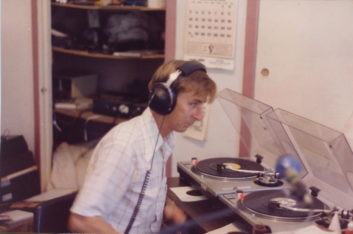
Radio infrastructures and studios are not just virtualized, they are now dematerialized. They still exist but they lie in a nomadic “somewhere” in the cloud.
The first 40 years of radio needed a common layout and equipment to run a radio station and a radio studio. The last 60 years have been all about evolving and transforming both that layout and equipment as well as adapting and enhancing the relevant workflow.
Today so much of traditional studio gear no longer exists in a physical shape. The effort in radio production has become a matter of “workflow.”
Yet, while hardware and software may have moved to the cloud, radio is still here. The competitive landscape of the medium has also evolved enormously. Since the ubiquitous availability of internet, a number of competing platforms have begun offering audiences new kinds of audio services.
This may scare some radio broadcasters. But one must consider that in any market segment fair competition usually enhances the quality of the end product and fosters consumer loyalty. Why shouldn’t it be the same for radio?
TALKING TO
So, what will happen to radio over the next 30 years?
In the future the concept of “audio consumption” will replace the idea of “radio listening.” The distribution mix and the fruition model of radio will probably experience a dramatic change. But we don’t have to confuse radio with its receiving device.
Radio is not just news, talent talk and music. Radio is storytelling and the ability to entertain and engage a target audience through the appropriate blend of stories, news and music.
A multitude of distribution platforms means a multitude of ways to reach our target audience. But while a customized playlist is “for” a specific listener, radio “talks to” the same listener. No matter if five- or five million people are listening, radio individually “talks to” each of them.
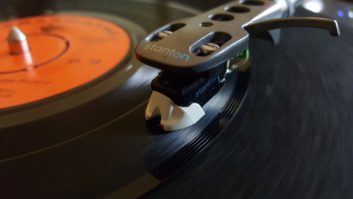
That’s the magic of radio, and that’s what radio stations have to preserve and even enhance. Using a radio station to broadcast a playlist turns that station into a music streaming service, just far more rigid than a streaming service. This is because listeners have no way to customize it.
A streaming service offering true storytelling through stories, news and music, de facto is a radio station. It’s our model with just a different distribution mix. But, again, radio refers to the content, not the distribution mix.
WHERE THINGS HAPPEN
Looking forward, the number of available stations will continue its rise with new stations targeting very specific audiences. The cost for producing content will significantly decrease, thus making it affordable to deploy many flavors of the same station, each of them targeting small or niche audience.
The overall audience numbers will probably remain similar to the present numbers, even if listening figures will be jeopardized through a much higher number of stations and channels. Future radio stations will probably be 100% virtual, with physical studio gear (if any) used for backup purposes only.
[Read: Radio World International Celebrates 30 years!]
The easiness to report from virtually everywhere, as well as to deploy a mobile studio, will move radio stations to be closer to where people meet and where things happen.
There will certainly still be RF transmitters and on-air broadcasts, as well as receivers featuring a return channel via IP to interact directly with the station. This will open new possibilities to engage the audience, offering them tailored information and content.
Overall operating cost per listener will not greatly vary in the future because the ongoing reduction in production and distribution costs will compensate for the need to produce much more content and to air more channels.
CALL FOR YOUTH
Provided radio succeeds in preserving its DNA, there is still one key item. Radio continues to lose its appeal with young listeners. Nowadays youth consumes more audio content than ever, but not radio.
This is happening in virtually every developed market, and thus far broadcasters have failed in reversing this trend.
This is most likely not because of the scarce appeal of radio content itself, but rather a matter of distribution channels and content format. Using various distribution platforms requires radio stations to properly repurpose their content to best fit each specific distribution channel. This may be the biggest challenge for radio in the future
Today’s youth are tomorrow’s listeners. According to radio listening reports per age group, their parents and relatives still listen to radio, both in car and at home. It is therefore natural that they are familiar with radio and have experienced a sort of endorsement for it.
The same thing happened to their parents, when they were young and that “imprinting” worked. The reasons why those premises are failing with today’s generation are still unclear.
Recently, the universal popularity of mobile devices across any age group drove many radio executives to trust that a well-shaped radio app could be an effective shortcut to bring radio back to the youth.
The results generally scored below expectations, probably because — once again — radio has been confused with its receiving device, while the crucial item is content.
A possible key to catching young peoples’ attention is through engaging apps and content designed and shaped in the way they want and are looking for.







